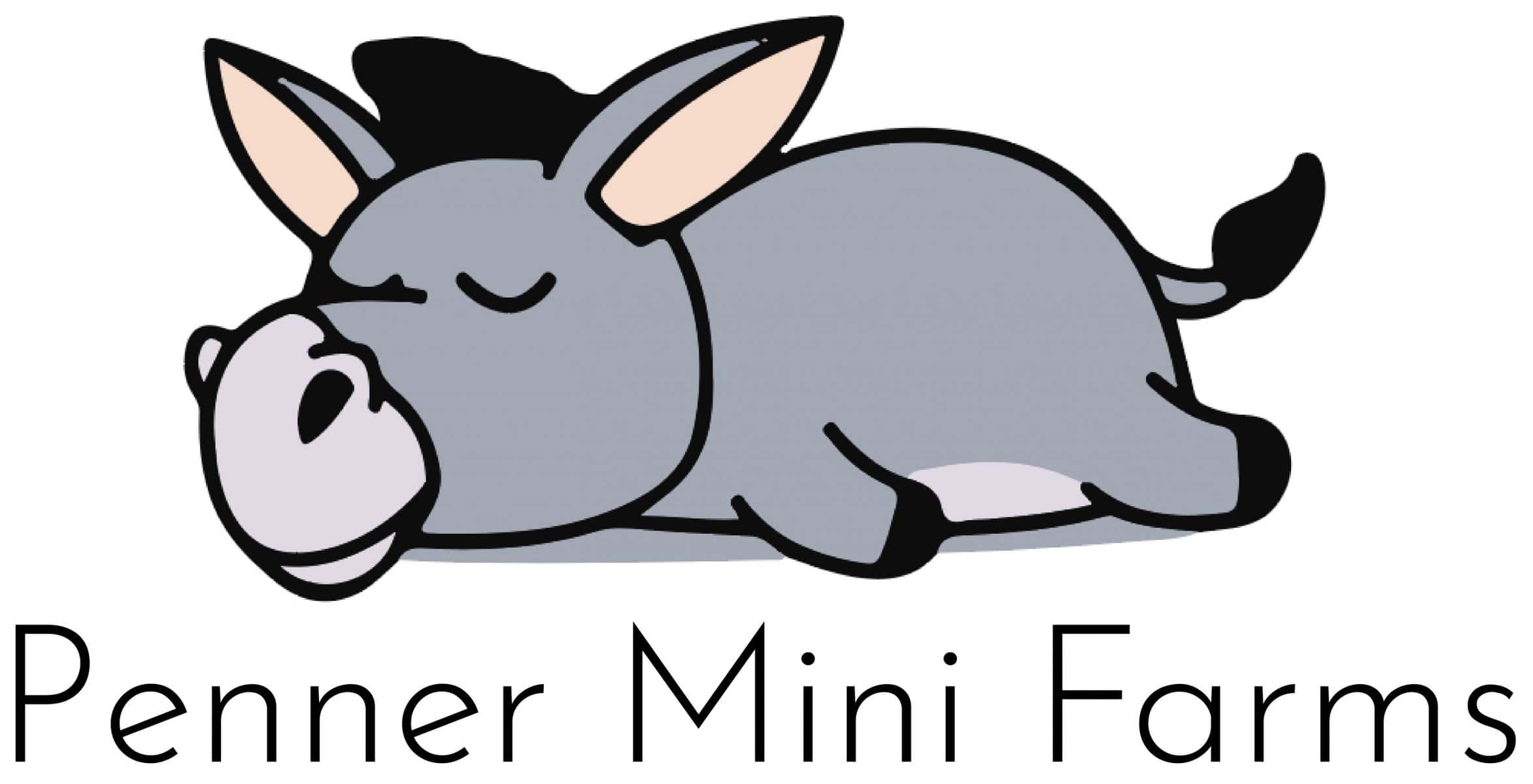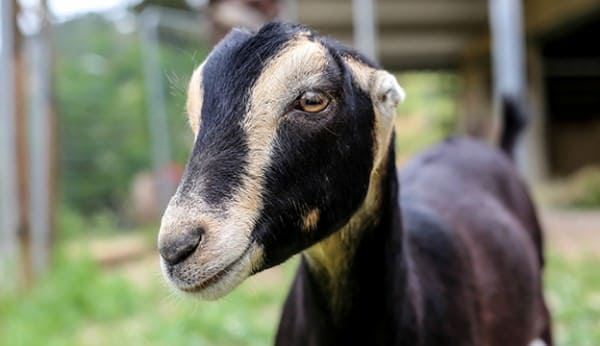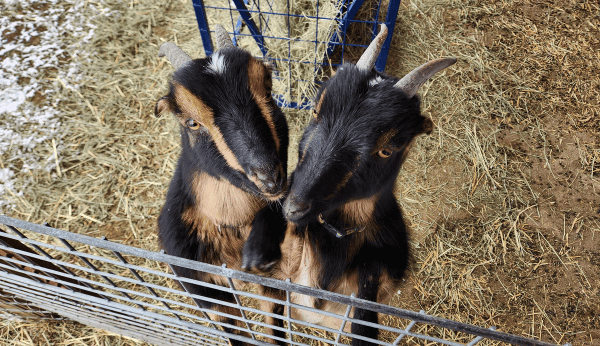LaMancha Goats
Our gentle giants with "the strange ears"
A short history on LaMancha Goats...
The LaMancha Goat breed originated in the United States, specifically in California and Oregon. The breed was developed in the 1920s by Eula Fay Frey, who crossbred Spanish and Swiss dairy goats to create a hardy, productive breed that could thrive in the American West, resulting in the LaMancha goats that we know and love today.
Here are a few of their most popular characteristics:
Distinct Ears
LaManchas are known for their unique ear shape, which can be either "Gopher Ear" or "Elf Ear." Gopher ears result in very small ears that are almost non-existent, while the Elf ears are no longer than two inches.
Milk Production & Butterfat
On average, a healthy LaMancha goat can easily produce 1+ gallons of milk per day. LaManchas produce milk with a high butterfat content (avg 4%), which makes it ideal for making dairy products such as cheese and butter or Goat Milk Soap.
People-Loving Temperment
In general, LaManchas are such gentle and loving giants that some people decide to keep LaMancha goats as "pets who milk" for their small family homestead. They are known for their friendly and docile personalities, and their calm temperment makes them easy to handle even though they are a full size breed.
A splash more about Milk
One of the things that we and many others love about our LaMancha goats is that they produce milk with a higher butterfat content (although not AS high as the little Nigerian Dwarfs), which makes it ideal for making dairy products such as Goat Milk Soaps, cheese, yogurt, butter and ice cream.
Their milk also has a high protein content, which is an important for nutrition, especially if utilizing their goat milk to supplement nursing goat kids and/or small children.
On average, a LaMancha goat produces 1-2 gallons of milk per day, depending on factors such as age, diet, and genetics. With proper care, some LaMancha goats have been known to produce up to 3,000 lbs of milk annually.
Our LaManchas
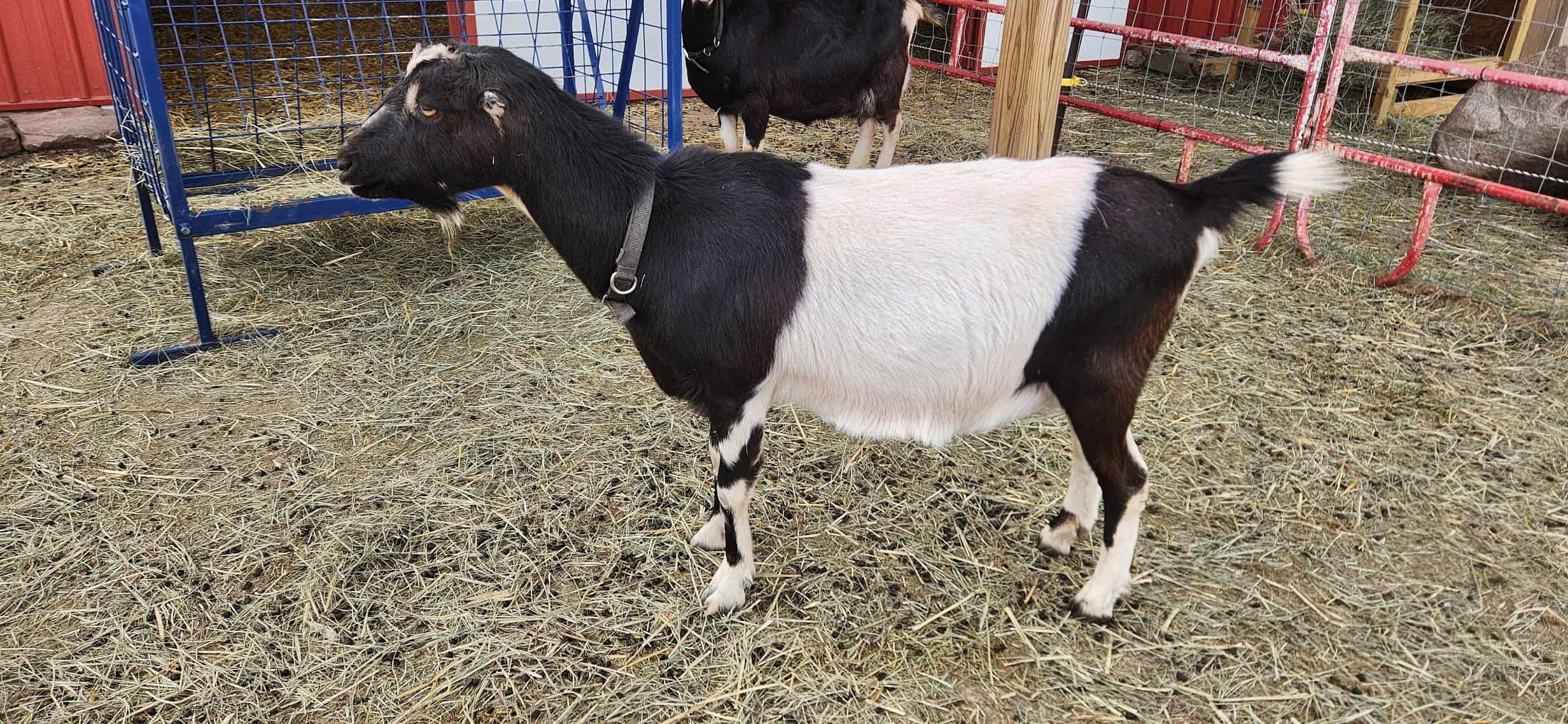
Daisy, AKA "Conflict"
DOB: 3/3/21
Breed: LaMancha
Registered: ADGA
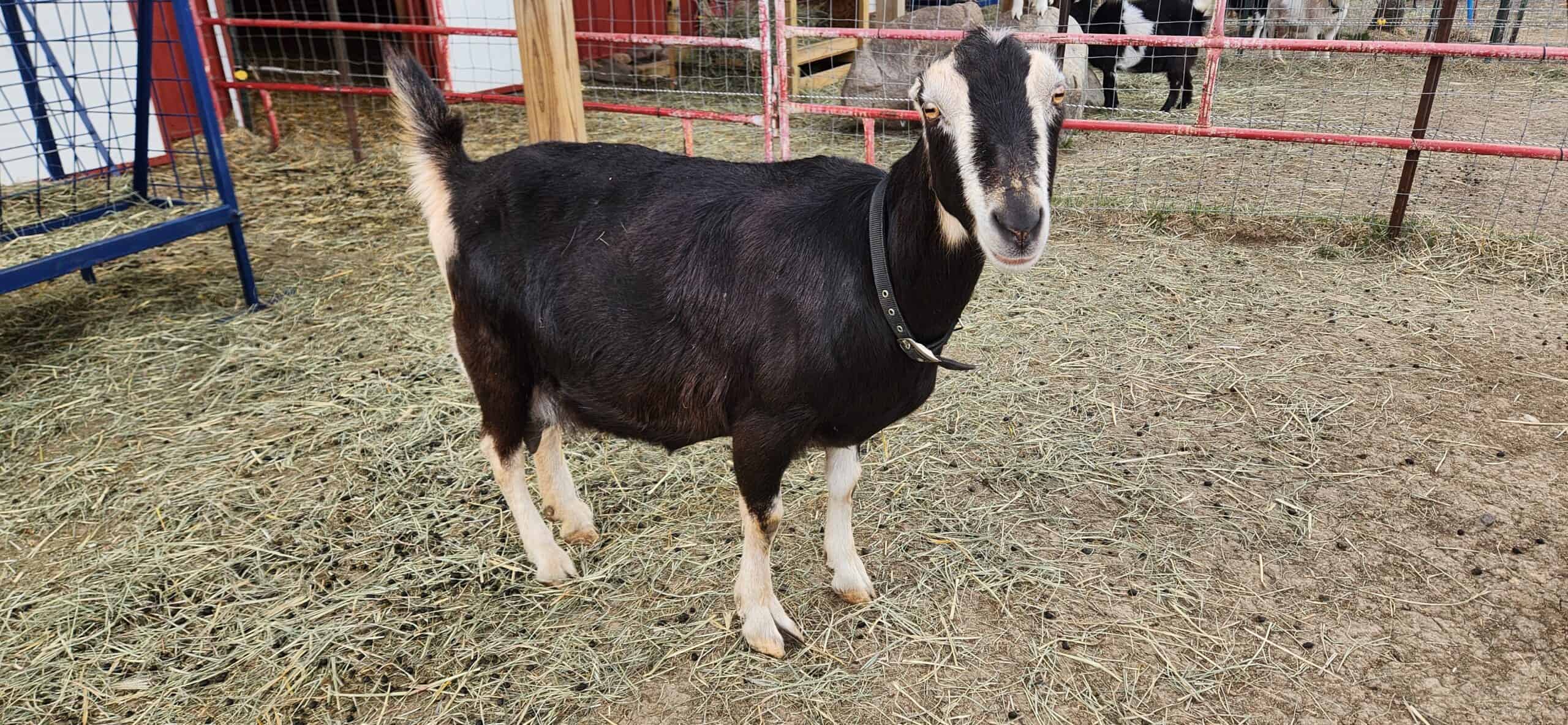
Merci, AKA "Big Girl"
DOB: 2/2/20
Breed: LaMancha
Registered: ADGA

Cinnamon
DOB: 3/12/24
Breed: LaMancha
Registered: ADGA

Ginger
DOB: 3/12/24
Breed: LaMancha
Registered: ADGA
Why we choose to raise LaMancha goats
So, if we are a farm specializing in miniature animals, why raise full size LaManchas? The short and sweet answer is miniature LaManchas.
We raise LaMancha goats so that we can breed them to our Nigerian Dwarf bucks and produce some of the most amazing goats ever….miniature LaManchas (or “mini Manchas”).
Mini Manchas seem to have the best characteristics of both breeds but they get a double portion of friendly, affectionate and lovable.
How our LaMancha journey started
My wife and I were at a sale barn one day and she saw an earless goat and was drawn to it. This goat was super friendly and just seemed to be longing for all of my wife's affection. We had no clue what kind of goat it was but my wife told me that she really wanted one of those goats. We went home and did some research and found out the goat was a LaMancha and they are bred to have an “earless” appearance. So our quest to find two LaMancha does began and we soon found a breeder with a couple available. We purchased our first two Registered LaMancha does in March of 2022 and they have been a delightful and fun addition to our goat flock. They are extremely clever (we learned to never underestimate them) but they are also very social, affectionate and calm. They have an almost unrealistic calmness to them that is refreshing after being around the very active and energetic Nigerian Dwarfs. These gentle giants are a great fit on our miniature farm.
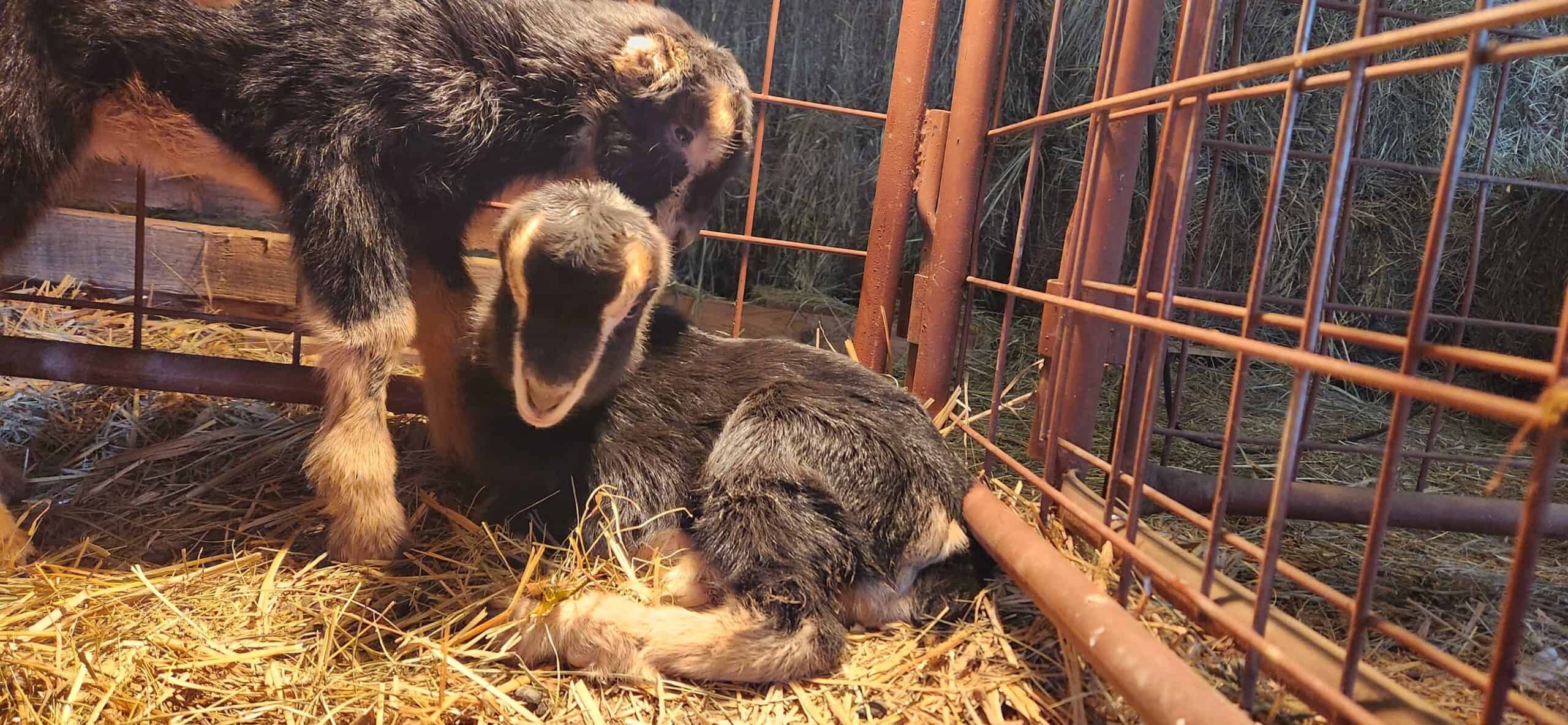

Frequently Asked Questions
What distinguishes LaMancha goats from other goat breeds?
LaMancha goats are known for their unique ear shape, which is very short and barely visible. They are also known for their calm temperament and high milk production. LaMancha goats are a medium-sized breed with a sturdy build and a straight back. They are a popular choice for dairy farmers due to their high milk yield and low maintenance.
Do you breed your LaMancha's with a LaMancha buck?
At this time, we only have Nigerian Dwarf bucks so we breed our LaMancha does to Nigerian Dwarf bucks.
We love producing Mini Manchas with this cross and prefer having smaller babies out of our does rather than larger babies by crossing a Nigerian Dwarf doe to a larger LaMancha buck.
What is the typical weight range for a LaMancha goat?
The average weight range for a LaMancha goat is between 130-180 pounds for does and 160-230 pounds for bucks. However, weight can vary depending on factors such as age, diet, and genetics.
How do LaMancha goats' ear size and shape differ from other goats?
LaMancha goats have very small ears that can almost appear as if they are non-existent. The ear canal is present for all LaManchas (so they have no hearing problems), but the external ear is reduced to a small, wrinkled nub known as a "gopher ear" or a small peaked "elf ear" which can be no longer than 2 inches long.
What is the average milk yield of a LaMancha goat?
The average milk yield of a LaMancha goat is around 2,000 pounds per year. However, some high-producing LaManchas can produce up to 3,000 pounds per year. Milk from LaMancha goats is known for its high butterfat content, making it an excellent choice for cheese and butter production.
Do you use your LaMancha goat milk to produce your Goat Milk Soaps?
Yes!
We mix our LaMancha milk with our Nigerian Dwarf milk to produce our hand made Goat Milk Soap bars.
Still have a question?
Please reach out on the form below and we'll get back to you as soon as we can!
